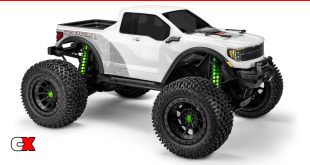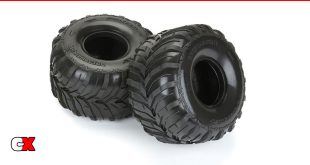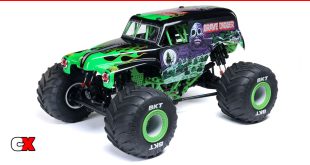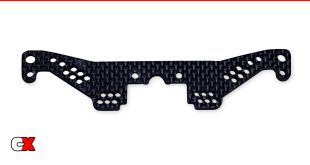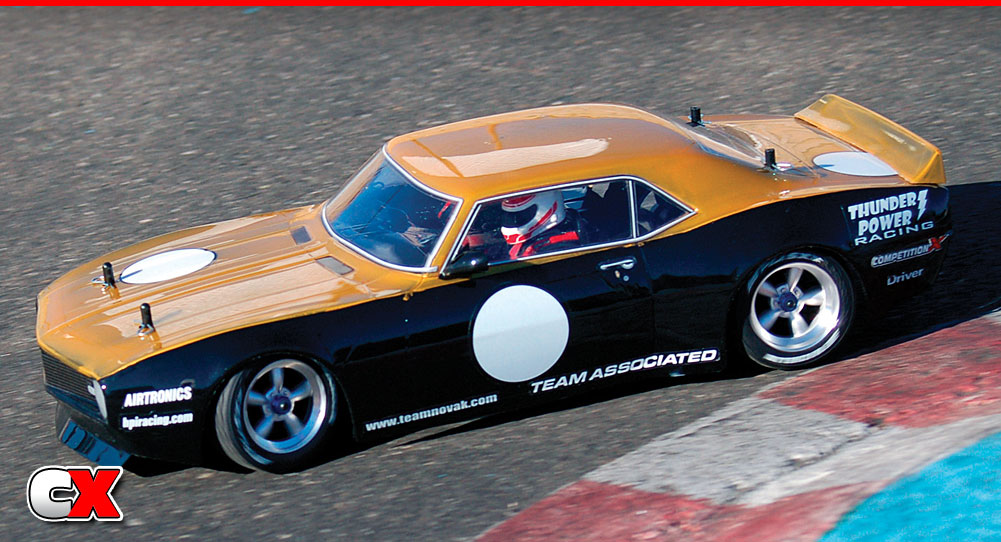
One of the more popular forms of racing is something called Spec Racing. Spec Racing involves a very specific set of rules that makes every car on the track extremely equal no matter what chassis package a driver is using. The Spec Racing class does this by controlling what ESC, motor, tires and in some cases batteries that are allowed in the class. It is up to the driver to fine-tune his chassis’ suspension to obtain the maximum performance.
Back in March, I went to the 2012 ROAR Carpet Nationals at Mike’s Hobby Shop in Carrollton, Texas. While I was primarily there to cover the event, I did sign up for a single class; Formula 1. Knowing that there would be a ton of people and quite a long wait in between runs, I decided to run an additional class to help pass the time. The Nats were hosting a VTA (Vintage Trans Am) class, and that is something I’ve always wanted to try. This class is hugely popular in the Mid-West/East Coast so I knew that my competition would be fierce. I had a great time and, even though it is a Spec Class, quite a few of those drivers clearly have their cars figured out! Upon arriving home, I decided I wanted to build a strictly-VTA car. Using the official rules on the US Vintage Trans Am web site (usvintagetransam.com), I started my VTA-specific TC build.
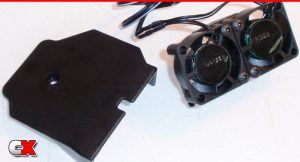 CHASSIS
CHASSIS
Since the rules state that any 4WD chassis can be used; I had quite a few to choose from. After doing a little research, I decided to go with Team Associated’s re-released TC4 Club Racer. First off, the VTA class has a minimum weight requirement of 1,550 grams. Yes, that’s pretty hefty, but I figured since the TC4 Club Racer is a completely molded car, it would be heavier out of the box than any of the dual-deck carbon fiber cars. Secondly, it’s shaft-drive. Now I know that a lot of you might be anti-shaft, but when this car came out it was the car to have! A VERY low-friction drivetrain meant less drag and higher top speeds. Thirdly, this car has a killer air-cooling system built in that would help keep motor temps in check. Since the VTA-assigned motor is a bit puny in power, gearing up and timing up are a must, so keeping the motor as cool as possible is critical. Finally, the TC4 Club Racer has an extremely low CG and all the tuning adjustments you would ever need. Oh, and at $150 it’s a steal! I like that!
I built the chassis per the manual except for a few items. The drivetrain is silky smooth, but to boost it into the uber-smooth realm, I added a set of ceramic bearings from Boca Bearings. After cleaning, re-oiling and installing, the Club Racer’s drivetrain was astonishing. I could spool up the drivetrain and it would continue spinning for about 15-20 seconds. That free-spinning translates into less work the motor has to do and a faster car.
The TC4 Club Racer comes with plastic-bodied shocks that use pre-load clips. Since the rules state a minimum ride-height of 5mm, I want to make sure I can hit that as close as possible so I installed a set of Team Associated’s Factory Team VCS3 shocks. These are the same shocks that come on their flagship on-roader, the TC6.1, so I knew they would rock on my TC4 VTA! I recently reviewed the TC6.1 so I’m quite familiar with them and how to build and tune them. I’m pretty confident my ride will benefit greatly from using these shocks.
To help keep temperatures under control, I added the A-Team’s Factory Team Motor Cooling Duct Fan Kit. This Cooling Duct system mounts to the chassis and uses a pair of high-speed fans to suck cool air through the vents in the bottom of the chassis. These fans then blow directly on the motor’s endbell to help reduce temps. The Cooling Duct also forms a wedge shape off the chassis so you can mount your ESC and receiver on top. Pretty slick setup if you ask me!
Finally, I scrapped the stock 48p gears and moved over to a 64p set. The biggest benefit to 64p gears is that they allow a lot more fine-tuning of your final gear ratio. While all VTA cars must run a 25.5t motor, not all 25.5t motors are the same. Having the ability to make small increments in your final drive (either up or down) is crucial to having a fast car. Just be careful when you use these gears; the teeth are a lot smaller and much more fragile than 48P. You’ll need to take care when you drive so that no small rocks or debris gets lodged in them.
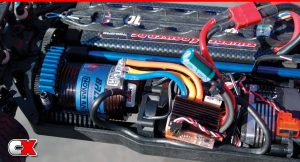 ELECTRONICS
ELECTRONICS
The electronics package for this VTA project is pretty straightforward. While there are a couple different systems to choose from, by far the most popular is Novak’s VTA ESC combo. This system is specifically designed for the VTA class complete with an Edge ESC and 25.5t Ballistic Brushless Motor. Thanks to the Edge ESC’s small footprint, I was able to install it on top of the FT Cooling Duct right next to my Airtronics receiver. The Ballistic motor also fit without any complications, however because of the nature of VTA (HUGE gearing), I did have to Dremel away a little of the chassis where the pinion is to make sure I could attain the correct gear ratios. For steering, I chose to go with Team Associated’s XP DS1015 servo. This servo may be a bit on the chunky side, but it does offer a hefty 201.4 oz-in. torque rating. That’s plenty to keep these tires turned in the right direction. Finally, I went with Thunder Power’s 5000mAh 50C LiPo pack. The VTA rules state a 2S with no more than 5000mAh so this was a perfect fit for my VTA ride.
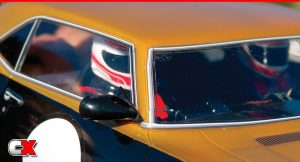 BODY, WHEELS AND TIRES
BODY, WHEELS AND TIRES
Here is where the cool-factor of this class begins. The biggest draw to VTA is the fact that it is based on Vintage Trans Am cars; basically late 60’s to 70’s era American Muscle Cars. It’s absolutely awesome watching these cars fly around the track and rub door to door. Even their chubby weight makes the cars lean going through the corners, adding to the realism. At the Nats I ran a 1969 Camaro from HPI and thought it was cool, but then I saw quite a few of the more race-inspired 1968 Camaro bodies; removed bumpers, flared fenders and covered lights. Deciding to go with this body, I painted it in Smokey Yunick’s gold/black paint scheme. Per the rules, driver figures are a must for this class so I added HPI’s Driver/Co-Driver Set from their Mini-Trophy truck. Wheels and tires are also controlled by the US Vintage Trans Am, and their rules specify that only a certain Vintage wheel and tire from HPI can be used. I ordered up a set, mounted them and added some racing decals on the sidewalls for a little additional flare.
PARTS
TEAM ASSOCIATED
teamassociated.com
• TC4 Club Racer–#30101
• VCS3 Shock Kit–#31323
• TC4 Factory Team Anti-Roll Bar Kit–#31057
• TC4 Factory Team Cooling Duct Fan Kit–#31037
• XP DS1015 Servo–#29167
NOVAK
teamnovak.com
• Edge/Ballistic VTA Combo–#3339
THUNDER POWER
thunderpowerrc.com
• 5000mAh 2-Cell/2S 7.4V LiPo Pack–#TP5000-2SPP65
HPI
hpiracing.com
• 1968 Chevrolet Camaro–#7494
• Vintage 5-Spoke Wheel (F)–#3815
• Vintage 5-Spoke Wheel (R)–#3820
• Vintage D-Compound Racing Tire (F)–#4793
• Vintage D-Compound Racing Tire (R)–#4797
AIRTRONICS
airtronics.net
• M11x
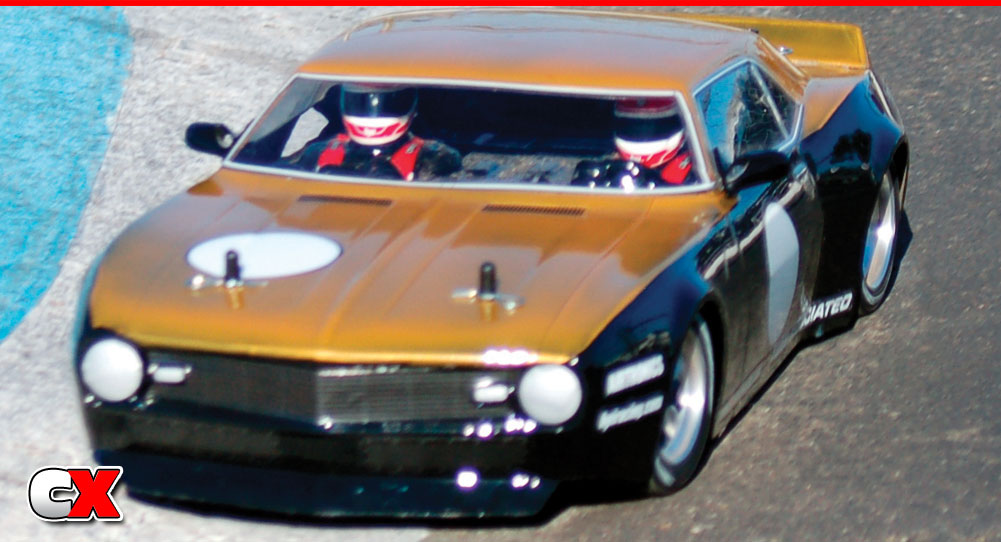
THE DRIVE
I took the VTA TC4 Club Racer to my local carpet track and, to really give it a good test, I also brought along my Nats-winning VTA rig. I ran three battery packs on the Nats VTA to get a good feel for the track and set some baseline lap times. The final run was the best and had my lap times down to mid-13s. I loaded up the TC4 VTA and took a couple of warm-up laps. The first pack was really a reconnaissance run to get a feel for the car. After pulling it off and checking the times, my fastest lap was a 14.2; right about where I expected it to be for a first run on the car. I made a few adjustments (thinner rear anti-roll bar, stood the front shocks up) and added a bit more tire traction compound to the front tire (initial was ½ the tire – I changed it to ¾). I went out for my second run and this time pushed the car quite a bit harder. It felt much more planted and I noticed a substantial increase in speed around the track (thanks to some added rear grip). I pulled the TC4 off and checked the times again; fast lap was a 13.3 with an average lap in the high 13’s. My lap times told me the car was fast, but my higher average suggested it wasn’t quite as consistent as my Nats car. I brought it back into the pits and made a few more adjustments (added camber and adjusted the rear camber link) and set it back out for a final run. Again, the TC4 Club Racer felt exceptionally fast around the track but still a bit inconsistent. I checked the lap times and my suspicions were correct; I hit a 13.4 fast lap but still high-13’s as an average.
FINAL THOUGHTS
The VTA class is something everyone can wrap their heads around. It’s not about having the best ESC, the fastest motor, the most powerful battery or the stickiest racing tires, but more about knowing your car and tuning it to perfection. As you can see from the TC4 Club Racer, any chassis (new or used) will work great for this class. While I didn’t hit the mark set by my Nats-winning car, I have a LOT more time on that car than the TC4. With a few more runs and some additional tuning, I’m extremely confident that the TC4 will be right there with the best of them. Plus, how can you not be interested seeing the wide variety of race-inspired vintage metal banging around the track?
 CompetitionX CompetitionX is the most up-to-date source for RC Car News, Reviews and Videos for Radio Control. We also have the most comprehensive Manual Database on the web.
CompetitionX CompetitionX is the most up-to-date source for RC Car News, Reviews and Videos for Radio Control. We also have the most comprehensive Manual Database on the web. 








